BRAHMA
In Ralph Waldo Emerson's poem, "Brahma" is miraculous in its blend of Eastern and Western thought. In the poem, Emerson assumes the role of Brahma, the Hindu God of creation. Emerson is able to use clever, yet complex paradoxical logic in order to present his philosophy in poetic terms. Throughout the poem, Emerson alludes to Hindu mythology. The knowledge of which he gained through reading the Bhagavad-Gita and other Hindu scriptures. In Ralph Waldo Emerson's poem, "Brahma", the overall theme is the divine relationship and continuity of life and the unity of the universe.
In the first stanza, Emerson expresses the continuity of life. He says that if a killer thinks he has killed another or if the dead think that they are truly well, they do not fully realize his power; for he, Brahma, can create, destroy and re-create. In the end the "red-slayer", or the Hindu God Krishna, and his victim are merged in the unity of Brahma.
When Brahma re-creates or "turns again," it is known commonly as the concept of reincarnation. Thus, the continuity of life is expressed through Brahma's eyes.
The ultimate unity if the universe is expressed through the second stanza. Emerson uses such opposites such as shadow and sunlight, good and evil, in order to prove this philosophical belief. In essence, Emerson states that all opposites are reconciled in the ultimate unity of the universe. This is proven as he states that shadow and sunlight are the same as are shame and fame. Thus, when it comes down to it, the universe is built through harmony and not counteracting forces such as good and evil.
In the last stanza, Emerson calls upon the reader to do something. He states, "Find me (Brahma), and turn thy back on heaven, this is a definite allusion to the statement in the eighteenth chapter in the Bhagavad-Gita which says, "Abandoning all religious duties, seek me as thy refuge. I will deliver thee from all sin." In lines before he makes this request, he states that the sacred seven, the highest priests, and the strong gods, the Hindu gods Indra, Agni, and Yama, pray to him in vain and ask for his asylum. Thus, he is saying that praying to him for material goods will not accomplish anything. Thus, the request that he makes is for the reader to join him in the ultimate unity of the universe, also known as the Hindu philosophy of Mukhti.
In Ralph Waldo Emerson's poem, "Brahma", the overall theme is the divine relationship and continuity of life and the unity of the universe. To begin with, this is explained through the concept of re-incarnation, which is expressed in the first stanza. Second, Emerson clarifies it the second stanza in which he states that the universe lives in harmony ad not opposing forces such as good and evil. Lastly, Emerson calls upon the reader to abandon praying for material thoughts or asking him, Brahma, for asylum as join him in the ultimate unity of the universe. In writing "Brahma," Emerson boldly crosses new bounds by assuming the perspective of a God and by cleverly mixing Eastern and Western thought
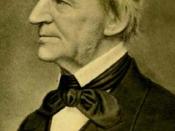
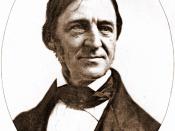

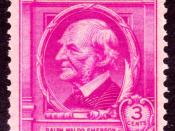
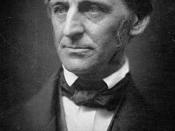
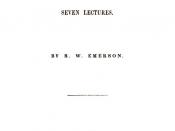
Also......................
u could add that the seven stars he is refering to is the constolation the great bear.
the stars r the seven great saints that hindus look up to
u show understanding and knowledge of what u write.
an overall good essay!
2 out of 2 people found this comment useful.